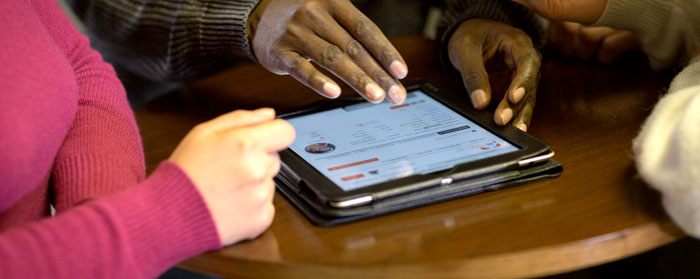For graphic designers, a career move into digital design makes sense. The shift to online platforms for almost all traditional media means skilled designers with an eye for the digital are in high demand. Of course, most graphic designers will feel they are skilled in digital design if they don’t already call themselves digital designers. Almost all modern graphic design is done digitally using programs like Photoshop and Illustrator.
Most conventional media is moving online, particularly those that rely in large part on graphic design. Magazines, newspapers, television and in particular advertisers are all moving to the internet.
These traditional media face many challenges in the move online. It is an ever more crowded marketplace with constant competition for customer attention. Standing out in such a space requires exceptional content and user experiences produced by digital designers.
Magazines and newspapers realise they can’t simply transfer their static print copy onto a website and expect to survive. The New York Times exemplified this with their innovative “Snowfall” article which blends traditional and digital media. But really, this should be seen as just a timid first step in the complete reinvention of online content.
Web browsers don’t simply offer designers the ability to include motion and scrolling effects into their conventional copy. HTML 5 incorporates an enormous range of utilities that need to be designed into sites. Apps also need designs specific to their functionality.

Digital designers need to not only incorporate the interactive properties of the web into their design but also work with copywriters in a holistic approach, blending content, copy and design in completely novel ways.
Digital Designers face a great challenge in balancing the simplicity of user experience with fresh design. An interesting, innovatively designed UX can draw a crowd to a website but only if that interest and innovation don’t come as the cost of ease of use. Over the long-term, users will always choose fluid navigation over-elaborate visuals.
Advertising was the cornerstone of media offline and it remains just as important online. Google’s empire is founded on ad revenue and it is the lifeblood of most major media sites. But the nature of the market has changed in the move online. Many media giants have struggled to adjust, creating an opportunity for smaller, more inventive brands to take their place.
Digital designers need to bring all of their skills to bear to develop innovative branding designs that capitalise on online advertising formats and give businesses the greatest return on their investments.

Digital design is at the forefront of the digital revolution. It is driving digital design concepts and user experiences from websites and App’s to digital marketing campaigns. But this is just the beginning. Tomorrow’s digital designers will be designing our future digital experiences from holograms to virtual reality interfaces. In short, it is an exciting and innovative industry to work in.
The transition from a graphic designer to a digital designer doesn’t have to be a difficult one. Digital Skills Global offers groundbreaking Professional Certificate and Short Course that transition graphic designer’s from graphic design to digital design. Our programs are designed to help participants reach their career goals and become the digital designers of the future.
On our courses, you will apply your learning by designing real world projects such as mobile apps or websites. You will also graduate with a portfolio of projects to help advance your career as a Digital Designer.
Hear from recent graduate Ger Walsh about how he upskilled from graphic design to digital design and can now offer a full spectrum of design services to his client.
Hear from graduate Anna Lonergan on how she is using responsive design to help deliver enhanced digital solutions.